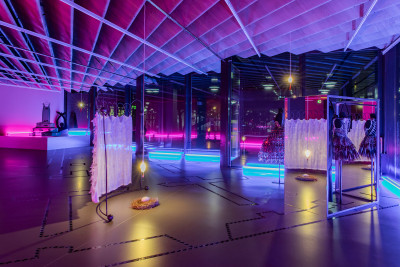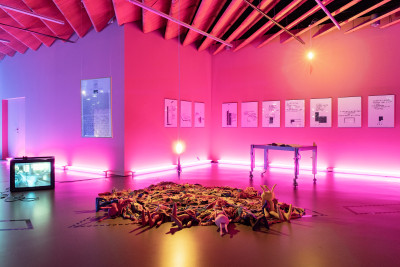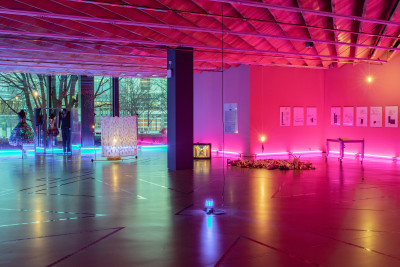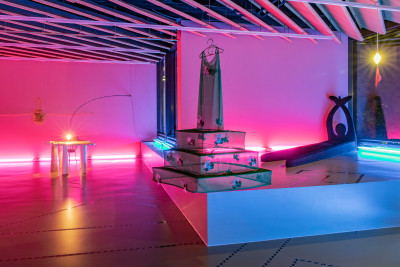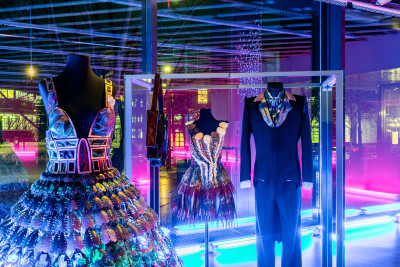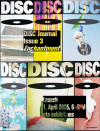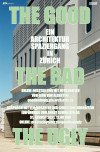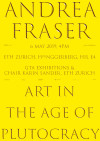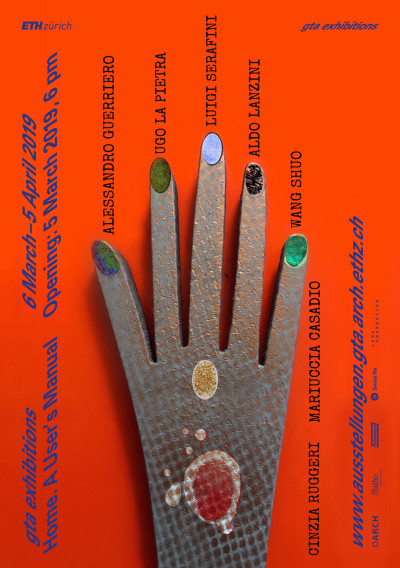
Home. A User's Manual
Cinzia Ruggeri with Mariuccia Casadio, Alessandro Guerriero, Aldo Lanzini, Ugo La Pietra, Luigi Serafini and Wang Shuo
Curated by Fredi Fischli, Niels Olsen and Valentina Ehnimb
6 March – 5 April 2019
Opening: Tuesday, 5 March 2019, 6 pm
ETH Zurich, Hönggerberg
Conversation with Mariuccia Casadio, Alessandro Guerriero and Trix & Robert Haussmann, moderated by Valentina Ehnimb and Oliver Lütjens
We are delighted to present the exhibition Home. A User’s Manual, a fictional building by designer and artist Cinzia Ruggeri and six invited participants. The exhibition draws its title from Georges Perec’s seminal novel La Vie mode d’emploi (Life A User’s Manual) in which the author meticulously describes the 99 rooms of an imaginary Parisian “demeure”, ranging from objects, furniture and architectural features to its inhabitants and visitors.
An active figure in the Milanese creative cosmos from the late sixties to the early nineties, Ruggeri has pioneered a radical approach to fashion and interior design. Her creations characteristically move between the disciplines, mixing design with art and architecture, but also with psychological and behavioural parameters. Ruggeri understands the dress as more than a mere envelope for the wearer; it is a space to inhabit, as can be seen in the Ziggurat dress, which unmistakably evokes the architectonic shape of a staircase. Furniture and living accessories not only underpin the needs of the body; they are themselves bodies that want to be dressed. Even a lightbulb is worthy of its own jewellery. Always imbued with a surreal and often humorous touch, Ruggeri’s designs work with established paradigms only to overthrow them, to break their rules.
Home. A User’s Manual offers a survey of Ruggeri’s oeuvre while also drawing attention to the Milanese context. Ruggeri has invited six friends, whose works function as reference points and in contrast to hers. Mariuccia Casadio, Alessandro Guerriero, Aldo Lanzini, Ugo La Pietra, Luigi Serafini and Wang Shuo contribute by each commenting on their idea of home, bringing together objects, garments, drawings, videos and texts. Within this fictional building, they coexist in joyous friction.
Home is seen as a controversial playground. As a universal concept, the notion of home acts as a trigger for ideas that go beyond merely functional or problem-oriented concerns, for they literally express a particular life style. In their singularity, these objects encapsulate individual aesthetic horizons, while also entailing a certain habitus of the user. However, the idea of home is deeply rooted in stereotypes of gender and historical codifications that call for critical assessment. By addressing the embeddedness of design within the larger sociocultural environment and challenging established ideas of living, Ruggeri and the here united participants have always been on the forefront of this critical project, which found a prominent iteration in the 1972 MoMA exhibition Italy: The New Domestic Landscape.
The notion of home reverberates in the exhibition, which is divided into several rooms, one assigned to each participant. The rooms are defined by the floor plan of Palazzo Farnese in Rome – an icon of Italian Renaissance architecture – that is turned by 45 degrees and marked off on the floor of the exhibition space with a tape especially designed for the occasion. The dog pictured on the tape, a Ruggeri trademark, points to her investigations into the relationship between the organic and the artificial, epitomized by the idea of the dog as domestic cyborg.
Photos: Nelly Rodriguez
